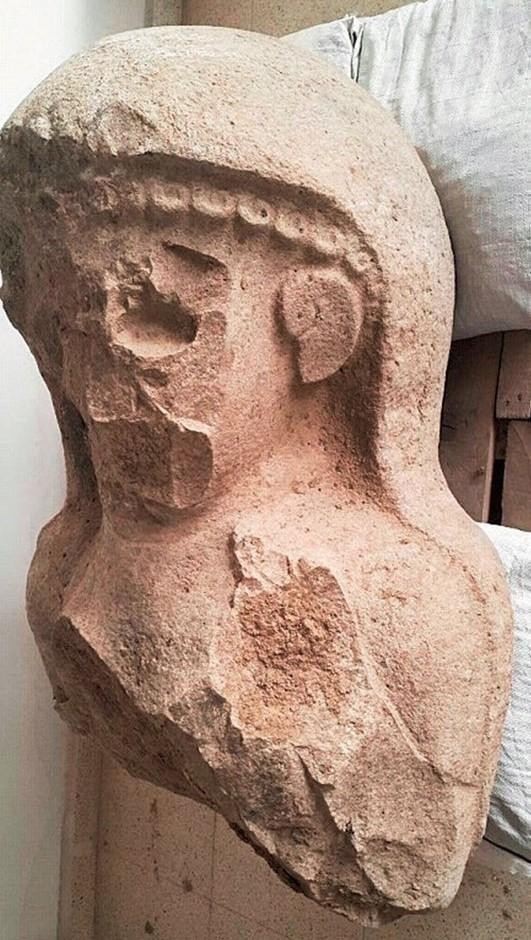Enormous 3,000-year-old statue of mysterious Turkish matriarch discovered
This majestic 5-metre-tall statue guarded the citadel of Kunulua in the Iron Age.

A giant Iron Age statue of a woman has been discovered at the archaeological site of Tayinat in Turkey, near the border with Syria.
The statue would have been between 4 and 5 metres tall from tip to toe, but only the head and shoulders remain. The statue shows a woman's head with curls of hair emerging from under a loose shawl.
The artefact is thought to date from the early 9th century BCE. It was found near the gate complex at the entrance of the upper citadel of Kunulua, later known as Tayinat. The city was the capital of the Neo-Hittite Kingdom of Patina.
It is not known in whose image the statue was carved, but there are several options the archaeologists are considering.
"It is possible that she is a representation of Kubaba, divine mother of the gods of ancient Anatolia," said archaeologist Timothy Harrison, director of the University of Toronto's Tayinat Archaeological Project, in a statement.
"However, there are stylistic and iconographic hints that the statue represents a human figure, possibly the wife of King Suppiluliuma, or even more intriguingly, a woman named Kupapiyas, who was the wife – or possibly mother – of Taita, the dynastic founder of ancient Tayinat."
Kupapiyas was the only known named female from this region in the first millennium BCE. She was said to live for more than 100 years and was an important matriarch in Tayinat society.
"The discovery of this statue raises the possibility that women played a more prominent role in the political and religious lives of these early Iron Age communities than the existing historical record might suggest."
A violent end
The statue was not in a good state when it was discovered. Its face and chest had been partially destroyed, possibly as part of a ritual thousands of years ago the archaeologists say. But despite this, the pieces of the eyes and nose of the statue are seem to be present.
The statue is thought to have been destroyed along with many others guarding the Kunulua gateway in 738 BCE, when the Assyrians conquered the area.
"Scholars have long speculated that the reference to Calneh in Isaiah's oracle against Assyria alludes to their devastation of Kunulua," said Harrison. "The destruction of the Luwian monuments and conversion of the area into an Assyrian religious complex may represent the physical manifestation of this historic event, subsequently memorialised in Isaiah's oracle."
But despite this, the archaeologists are confident that they will be able to reconstruct the face of the statue, which could shed light on her identity.
"The recovery of these tiny fragments will make it possible to restore much if not all of the face and upper body of the original figure," said Harrison.
© Copyright IBTimes 2025. All rights reserved.






















